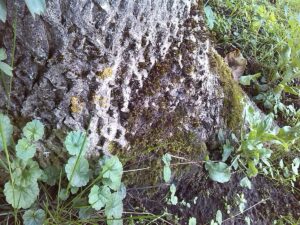This article would define in detail about amensalism along with the different types and various amensalism examples to gain an in-depth understanding regarding the relationship.
In the ecosystem, there are different types of relationships among various species and not all the relationships are positive. Amensalism would be an example of a negative relationship existing between two species within the ecosystem.
What is amensalism?
Amensalism is described as the “ecological interaction” existing between two species within the ecosystem, where one among the two would either be destroyed or eliminated from the ecosystem and the other species would remain completely unaffected.
This relationship is established as a form of interaction where a competitive behaviour is promoted or witnessed between two species. This interaction is one of the evident modes of evolution where the survival of the fittest generates the “natural selection”.
In an amensalism interaction, the species that remains completely unaffected or are responsible for causing the harm to the other involved species usually engage in producing some kind of chemicals or any product that would have a negative impact on the species.
Amensalism types
Amensalism can be broadly classified into two different types based on the species that are involved and the impact of the overall interaction.
Competition
This is identified as a negative interaction in which there is involvement of two species, one large or strong and the other one is small. In this, mostly the stronger species deprives the smaller one from the food, living or other important survival aspects.
In this interaction, the involved species belong from a common niche within the ecosystem which leads to the situation of scarcity for the weaker section of species in terms of living spaces and consuming nutrients.
The stronger species involved in the interaction remains completely unaffected as the competition is the outcome of sharing a common ecological niche. This can occur between the same species as well.
Antibiosis
This is the type of interaction where the weaker species is killed with a type of chemical secretion by another species, while itself remaining unaffected. The term antibiosis has been derived from the French word “antibiose” which defines an antagonistic relationship among species that colonise within similar ecological niches.
One of the species involved in the interaction secrete antibiotics against other species who are identified as predators as a defence mechanism. Some species even engage in secreting toxins.
This is identified as the interaction where one of the species interrupts the growth of the other species by inhibiting the development which allows them to have a greater access to more resources like food. These interactions have been identified to be common in species of prokaryotes as well as eukaryotes.
Amensalism examples
Few of the amensalism examples highlighted in terms of both the types are listed below:
Amensalism Examples of the type Competition
Example 1: Goats and insects
Herbivores for example goats engage in sharing the same ecological niche as that of the grasshoppers which leads to an interaction of competition between the two species for the resources like food.
The goats tend to consume the similar types of grass and shrubs that the insects feed on which leads to an increased scarcity of food for the insects. The goat on the other hand remains unharmed whereas the insects remain deprived from a considerable portion of food.
Thus, this interaction highlights competition where the stronger species, which is the goat, has a negative impact on the growth of the weaker species, which are the insects due to their presence in the same ecological niche.
Example 2: Larger and smaller fishes
Inside the aquatic habitats, the smaller fishes have to engage in competing with the larger fishes in terms of acquiring enough food as for both types, phytoplankton and zooplankton is the actual source of food.
The larger fishes have an easier access to these food resources whereas the smaller fishes face a hard time to avail the food due to increasing scarcity. Thus, in this interspecies competition, the smaller fishes mostly get eliminated in the long-run.
Amensalism Examples of the type Antibiosis
Example 1: Penicillium and bacteria
In the interaction between the fungal species Penicillium and other sets of bacterial species, it has been identified that Penicillium secrete penicillin as a secondary metabolite during the process of growth.
Penicillin has been identified to have an antagonistic effect against different types of bacterial species. Thus, penicillin was identified as the first antibiotic which could kill or inhibit the growth of bacterial species. Thus, the bacteria sharing a common niche with Penicillium gets eliminated from the ecosystem.
Example 2: Black walnut and herbaceous plants
Black walnut identified as Juglans nigra engages in producing the substance known as juglone that has been identified to have an antagonistic effect on different types of herbaceous plants that are situated in the root zone of the Black Walnut plant.

The walnut plant produces juglone as the self defence mechanism to remain protected from various pathogens and in the process any herbaceous plants that grow near the root zone of Black Walnut get eliminated from the ecosystem.
Also Read:
- Atp synthesis stages
- Glycolipid functions
- Is fungi prokaryotic or eukaryotic
- Nucleotide examples
- Adenosine nucleoside nucleoside phosphoramidite
- Is fungi abiotic
- How are enzymes produced
- Do cytoplasm have mitochondria
- Fungi chromosome structure
- Stromatoporoidea types
Hi, I am Sayantani Mishra, a science enthusiast trying to cope with the pace of scientific developments with a master’s degree in Biotechnology.